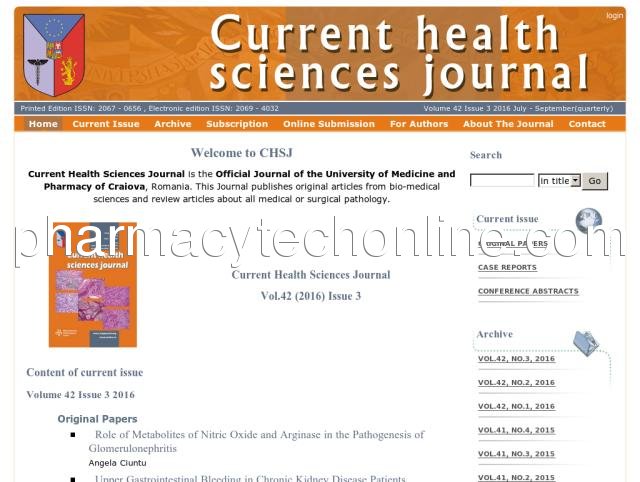www.chsjournal.org Review:
pharmacytechonline.com/w/www.chsjournal.org.html
Current Health Sciences Journal - For the first time in the history of gastroenterology, an international conference will take place which joins together the forces of four pre-eminent organisations: GASTRO 2009, UEGW/WCOG London.

Country: 193.226.38.90, Europe, RO
City: 23.8 Dolj, Romania
When I talk to parents about reading, I first ask whether their child's vision has been checked. The second question I ask is whether the child is left handed. This sounds like an odd question, but almost unanimously when I ask if a child is left handed, there has been a delay. It has taken that child longer than their other children to learn to read. I agree with the theory that our brains process information differently if we are right or left handed. Right handed people are predominantly left brained and left handed people are right brained. Different memory traits are associated with each side and it seems that left brained people have an easier time learning to read.
I've used this product for a month now and it has given me great results. Not only did I add size but also increased my strength. Also, it helps with recovery. I usually workout at night so I take them before going to bed and wake up without any soreness.
After going to the dentist and having several cavities between my teeth, I decided flossing wasn't doing enough and invested in the waterpik.
Most skin care experts preach about the need for a retinol or retinoid product. But, if you're like me and have sensitive skin, that's easier said than done! Most retinol based products are irritating to my skin and/or make my skin flush really easily after extended use. I almost didn't give this a chance because I don't seem to learn from my mistakes! Glad I didn't learn and tried it out! I think that the addition of the green tea really helps to decrease sensitivity and inflammation. I prefer that my skin care products be packaged with either a pump or in a tube to 1) prevent contamination and 2) prevent the breakdown of the product/antioxidants. The pump on this product works great and dispenses the perfect amount of product, for me, in only one pump - which is nice because it reduces waste.